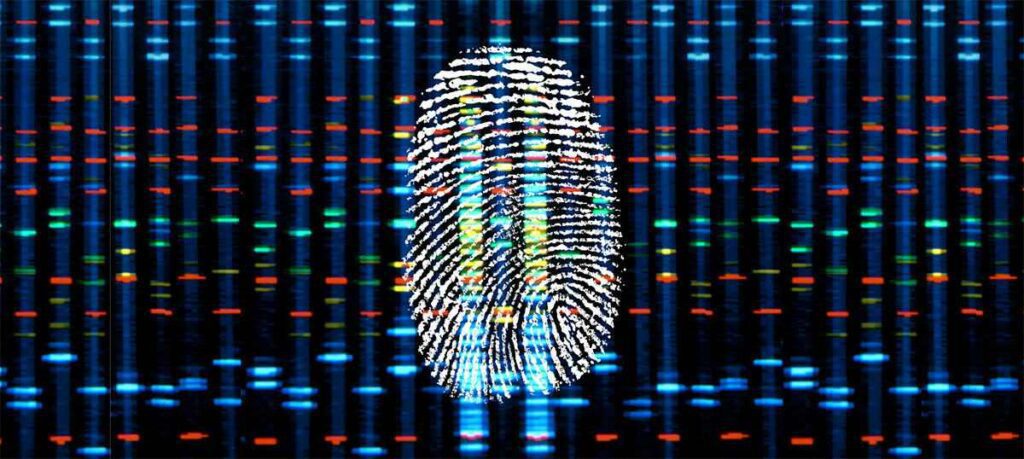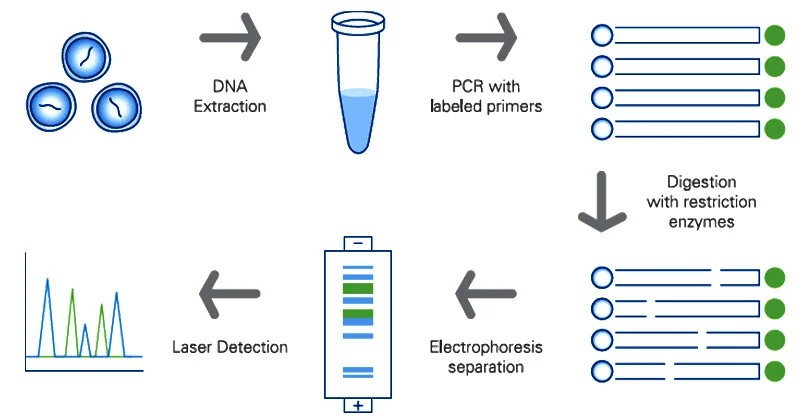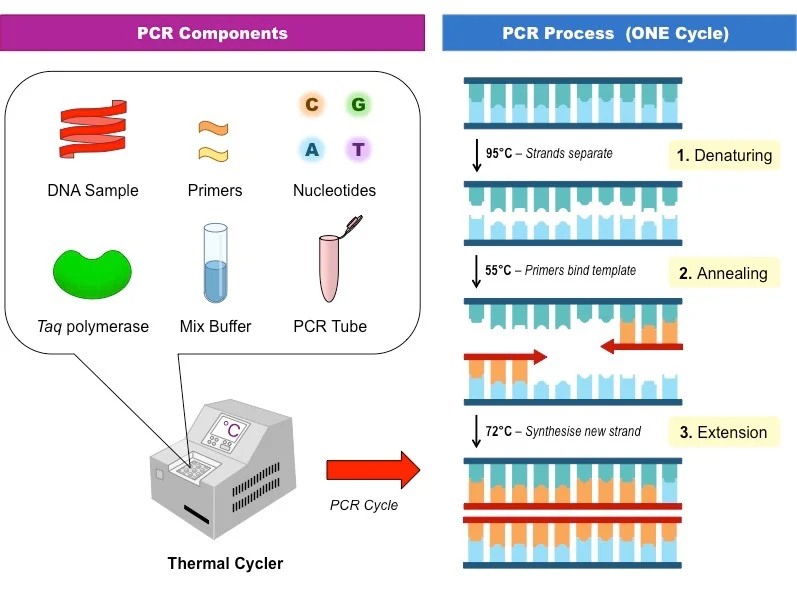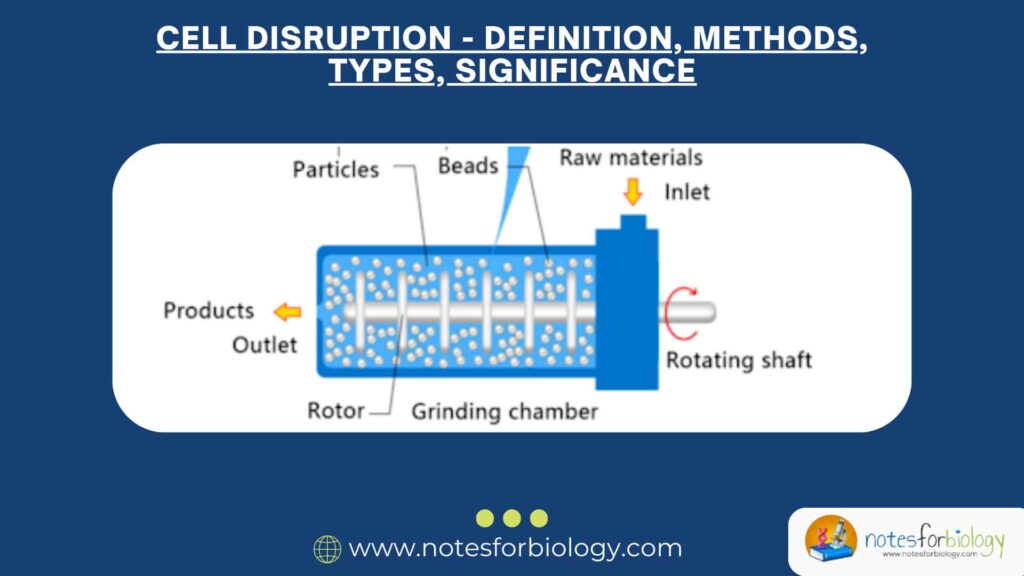Introduction
DNA fingerprinting, also called DNA profiling or genetic fingerprinting, is a powerful scientific method used to identify individuals based on their unique DNA sequences. Just like how every person has unique fingerprints on their fingers, their genetic makeup also carries patterns that are specific to them and them alone—except for identical twins. This technique was first developed in 1984 by British geneticist Sir Alec Jeffreys and has since transformed forensic science, paternity testing, criminal investigations, and even wildlife conservation.

In the modern era, DNA fingerprinting has become a key tool in both legal and scientific communities. It is used to establish identity, determine biological relationships, solve crimes, diagnose inherited diseases, and trace lineage. The technique relies on the fact that although most of our DNA is identical to others, certain regions vary greatly between individuals. These differences, often in the form of short repeating sequences, form the basis of DNA fingerprints.
In this comprehensive explanation, we will explore the principle of DNA fingerprinting, step-by-step methods, tools used, and its wide range of applications in a simple, humanized manner that makes the concept easy to understand and relatable.
Table of Contents
Principle of DNA Fingerprinting
DNA fingerprinting works on the principle that every person (except identical twins) has a unique DNA sequence. While about 99.9% of our DNA is the same across all humans, the remaining 0.1% is different and contains sequences that vary in length and number of repeats. These repeating sequences are known as Variable Number of Tandem Repeats (VNTRs) or Short Tandem Repeats (STRs).
These regions are:
- Highly variable
- Non-coding (do not affect traits)
- Inherited from parents
By analyzing multiple STR or VNTR regions across the genome, a unique pattern or “fingerprint” can be obtained for an individual. If two samples have identical patterns, they likely come from the same person or are closely related.
The process uses enzymes to cut DNA, amplifies regions of interest, separates the fragments using gel electrophoresis, and visualizes them to form a pattern. This pattern is then compared between individuals or samples to identify matches or differences.
Characteristics That Make DNA Fingerprinting Possible
- Polymorphism
These are DNA regions with high variability among individuals. - Inheritance
The pattern of STRs is inherited from both parents, which helps in paternity or familial tests. - Stability
STRs are stable across generations and do not easily mutate. - Tissue Universality
DNA is the same in all tissues (blood, hair root, skin cells, saliva), making the technique applicable to many sample types. - Reproducibility
Results are consistent when the test is repeated on the same sample.
Methods of DNA Fingerprinting
Several methods have been developed since the technique’s invention. While the early methods were based on hybridization, modern techniques rely on PCR and DNA sequencing. Let’s break down each in detail.
1. Restriction Fragment Length Polymorphism (RFLP)
Overview
RFLP was the first method used for DNA fingerprinting. It involves cutting DNA with restriction enzymes at specific sequences and separating the fragments based on size.

Steps
- DNA is extracted from the sample.
- Restriction enzymes cut DNA at particular recognition sites.
- The resulting fragments are separated by gel electrophoresis.
- The pattern is transferred to a membrane via Southern blotting.
- A radioactive or fluorescent DNA probe is used to bind specific DNA sequences.
- Autoradiography is used to visualize the bands.
Limitations
- Requires a large amount of high-quality DNA
- Time-consuming and expensive
- Not suitable for degraded or old samples
2. Polymerase Chain Reaction (PCR)-Based STR Analysis
Overview
The most commonly used method today. STRs (Short Tandem Repeats) are targeted, amplified using PCR, and then analyzed.

Steps
- DNA is extracted from the sample.
- Primers specific to STR regions are used for PCR amplification.
- The PCR products are run on capillary electrophoresis or agarose gel.
- Fluorescent dyes label the STRs.
- A computer reads the band patterns or peak charts.
Advantages
- Requires only a small amount of DNA
- Works with degraded samples
- Quick and cost-effective
- Highly accurate and automated
3. Amplified Fragment Length Polymorphism (AFLP)
A method that combines restriction digestion and PCR. AFLP is useful for DNA fingerprinting in plants, animals, and microorganisms but not widely used in human forensics.
4. Random Amplified Polymorphic DNA (RAPD)
This method uses short random primers to amplify anonymous DNA fragments. It is quick but not very reproducible, so it’s not ideal for legal or diagnostic purposes.
5. Microsatellite Analysis
A microsatellite is another name for STRs. This method focuses on highly polymorphic STR regions and is used in modern DNA profiling.
6. DNA Sequencing
With advances in genomics, direct sequencing of STRs or other polymorphic regions can be used for DNA profiling. It’s highly accurate but more expensive.
Steps in the DNA Fingerprinting Process
Step 1: Sample Collection
DNA can be extracted from various biological samples:
- Blood
- Saliva
- Hair roots
- Semen
- Skin cells
- Bone or tooth (in case of old remains)
Proper collection, labeling, and preservation are crucial to avoid contamination.
Step 2: DNA Extraction
This step isolates DNA from the cells. Detergents break open the cells and proteins are removed using enzymes. The purified DNA is then used for further analysis.
Step 3: DNA Quantification
The amount and quality of DNA are measured using spectrophotometers or fluorometric methods to ensure sufficient DNA is available.
Step 4: Amplification (PCR)
PCR is used to selectively amplify STR regions from the DNA sample. Fluorescent primers are often used for visualization.
Step 5: Fragment Separation
Amplified DNA fragments are separated by size using capillary electrophoresis or gel electrophoresis. Each STR variant appears as a distinct peak or band.
Step 6: Pattern Analysis
The resulting pattern of STRs is analyzed using computer software. A profile is generated that shows the number of repeats at each STR location.
Step 7: Matching and Interpretation
The DNA profile from one sample is compared with another. If all STR markers match, it is a positive identification. The likelihood of two unrelated individuals having the same profile is extremely low.
Applications of DNA Fingerprinting
1. Forensic Science
The most well-known use of DNA fingerprinting is in solving crimes.
- Identifying suspects from biological evidence at crime scenes
- Exonerating the innocent
- Identifying victims of murder, accidents, or disasters
Example:
If a hair found at a crime scene matches the DNA of a suspect, it can serve as strong evidence.
2. Paternity and Maternity Testing
DNA fingerprinting can determine whether a person is the biological parent of a child.
- Paternity disputes in court
- Immigration and adoption cases
- Reuniting families separated by war or disasters
3. Identification of Remains
In cases of war, mass disasters, or historical investigations, DNA is used to identify human remains when other features are unrecognizable.
4. Medical and Genetic Diagnosis
DNA fingerprinting helps in detecting inherited genetic disorders.
- Thalassemia
- Sickle cell anemia
- Huntington’s disease
- Carrier testing
5. Organ Transplant Compatibility
Genetic profiling ensures that donor and recipient are genetically compatible, reducing the risk of transplant rejection.
6. Wildlife Conservation and Poaching Control
Used to identify species and individuals in endangered populations and to track poaching.
- Genetic tracking of rhinos, elephants
- Identifying illegal trade in animal parts
7. Agricultural Biotechnology
Used in plant breeding and seed certification.
- Confirming hybrid strains
- Protecting patent rights on genetically modified crops
8. Evolutionary Biology and Anthropology
Used to study evolutionary relationships between species and trace human ancestry.
- Human migration patterns
- Evolution of ancient humans like Neanderthals
9. Twin Studies
Helps distinguish between monozygotic (identical) and dizygotic (non-identical) twins.
10. Legal and Civil Uses
DNA fingerprinting is increasingly used in:
- Custody battles
- Inheritance disputes
- Establishing citizenship and lineage
Advantages of DNA Fingerprinting
- Highly accurate and reliable
- Applicable to a wide range of samples
- Works even with old or degraded samples
- Widely accepted in legal and scientific communities
- Useful for both individual identification and kinship analysis
Limitations and Concerns
- Requires careful handling to avoid contamination
- Privacy concerns with storing DNA data
- High cost in advanced methods
- Ethical concerns in misuse or unauthorized testing
- Not foolproof in cases of chimerism or closely related individuals
Future of DNA Fingerprinting
DNA fingerprinting is becoming faster, cheaper, and more powerful with new technologies. Next-Generation Sequencing (NGS) and CRISPR-based tools are opening new possibilities.
- Portable devices for field testing
- DNA databases for faster matching
- Real-time crime scene analysis
- Integration with artificial intelligence for predictive genetics
The future holds promise for personalized justice, medicine, and ancestry mapping.
Conclusion
DNA fingerprinting is one of the most valuable scientific tools developed in the last century. By unlocking the hidden code within our DNA, it allows scientists, law enforcement officers, doctors, and researchers to identify, diagnose, and understand individuals at a molecular level. Whether it’s catching a criminal, solving a mystery, confirming a parent, or conserving wildlife, the applications are vast and impactful.
Understanding the principles and methods behind DNA fingerprinting not only helps in scientific advancement but also ensures ethical use of such powerful technology. As this technology evolves, it promises to bring greater accuracy, deeper insight, and broader applications in everyday life.
FREQUENTLY ASKED QUESTIONS
What makes DNA fingerprinting unique?
DNA fingerprinting analyzes highly variable non-coding regions of DNA. These regions differ greatly among individuals, making each person’s profile unique.
Is DNA fingerprinting accurate?
Yes. The chances of two unrelated individuals having the same DNA fingerprint are extremely low (1 in billions), making it highly accurate.
Can DNA fingerprinting be done on a small amount of sample?
Yes. PCR-based methods can work with tiny or degraded DNA samples like a hair root, blood spot, or saliva swab.
Related Articles




